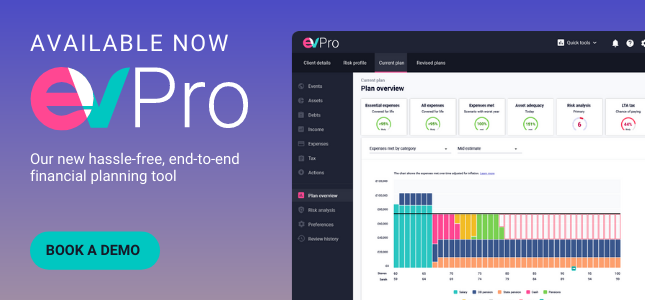Avoiding risk misalignment in client portfolios

Ensuring investment recommendations align with a client’s risk appetite is essential for any sound financial plan. But are current processes robust enough to prevent portfolio misalignment that could lead to poor client outcomes?
Investment solutions that expose the client to either too little or too much risk can be costly for both parties. It may leave the client short of their financial goals, with the adviser forced to pay compensation for unsuitable advice.
Advisers have to get this right for their clients – the Financial Conduct Authority’s (FCA) stance is clear and has been for some time. Almost a decade ago, the City watchdog issued a stark reminder to firms about their responsibilities when recommending suitable investment solutions, ramming home the importance of adopting robust risk-profiling processes. The risk-profiling landscape has undergone a drastic change since, with the technology powering the emergence of new tools and processes to help advisers gather a more accurate and rounded picture of client risk appetite. But despite these advances, risk misalignment still occurs, so here we examine the steps advisers can take to ensure investment solutions are suitable.
Defining risk
Let’s start by establishing how risk is defined. In the FCA handbook under COBS 9A.2, when providing investment advice or portfolio management, a firm must obtain information from a client about their knowledge and experience, ability to bear losses, and investment objectives, including risk tolerance. An individual client’s perception of risk is particularly important. For example, one investor’s interpretation of significant risk may be in stark contrast to another’s. A good quality risk-profile questionnaire, followed by an in-depth discussion between adviser and client, can help establish client risk perception.
Once the adviser has collected and analysed this information, they must only recommend services and products that suitably match a client’s personal risk appetite and capacity for loss.
Horses for courses
While often considered two sides of the same coin, risk tolerance and capacity for loss have essential distinctions. Risk tolerance reflects an investor’s emotional ability to willingly take a financial risk - it’s primarily based on personality, generally established through psychometric testing. Meanwhile, capacity for loss is a mathematical calculation, often displayed in pounds and pence, of the maximum risk an investor can take without comprising their financial goals.
Both factors must be considered when arriving at the most suitable investment strategy; a client can be risk-tolerant but unable to bear losses. This emphasises that there’s far more to risk alignment than going by the results of a risk-profile questionnaire.
Helping hand
As noted higher up, the risk-profiling landscape has evolved over the previous decade, with technology playing a bigger role than ever before. There are host risk-profiling tools in the market, available from both third-party providers and on platforms. However, the tools themselves form only part of the risk-profiling process. They should be complemented with a detailed adviser to client discussion to better understand risk appetite and capacity for loss. This discussion also helps advisers determine whether clients wish to deviate from their standard risk appetite for a specific investment. For instance, a young investor may be prepared to take greater risk with their retirement savings due to an investment time horizon spanning many decades. Failure to capture this may result in an unsuitable recommendation.
Suitable asset allocations can be considered once an adviser has established and agreed on a client’s risk profile score. This is where risk misalignment may occur.
How risk misalignment occurs and how to fix it
A risk mismatch can happen in several circumstances. Firstly, the investment solution recommended by the adviser is largely driven by their investment proposition. However, clients may be exposed to risk misalignment if the risk-profiling process and investment proposition are out of sync. For example, the risk profiler may determine investment solutions with a five risk score that is suitable for a particular client. However, the investment proposition’s five interpretations may be either more or less risky than this, resulting in unsuitable asset allocations. Therefore, advisers must undertake sufficient research and due during the analysis phase to avoid a risk mismatch.
In some cases, although the initial investment solution recommendations are suitable, risk misalignment can occur over time, as the varying performances of different asset classes result in portfolio weightings deviating from their original allocations. In this instance, the client is exposed to greater or lesser risk than likely to be suitable. However, original weightings can be restored with regular portfolio rebalancing, either periodically or reactive.
A solution here is they ensure that both the investment proposition and risk-profiling tools are singing from the same hymn sheet. Our EVPro software is designed to deliver consistency to the advice journey from start to finish, negating the need to integrate multiple third-party tools during the client onboarding process. The synchronicity between investment proposition and tools significantly reduces the likelihood of risk misalignment.
To find out more, book your tailored 1-2-1 demo now
So what next?
If you found this information helpful and want to see how you can deliver better financial outcomes for your clients. Then, why not book your one-to-one demo of EVPro, by clicking the link below.
